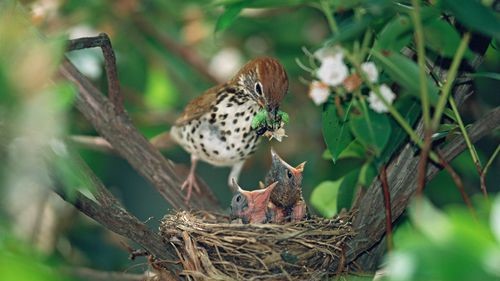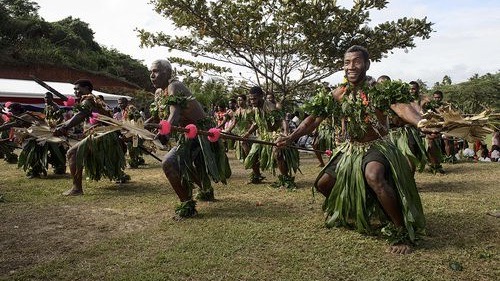Have you ever heard the expression, “You can’t see the forest for the trees”? It means people are so focused on a small detail that they miss the bigger picture of a situation.
Usually, you want to keep the big picture in mind when trying to solve a problem. But it turns out that researchers trying to understand the decline in numbers of birds in the forests of Pennsylvania actually needed to focus on the trees. In this case, they literally were not looking at the trees because they were focusing on the forest—just the opposite of the expression!
Bird biologists in the eastern United States were concerned because birds seemed to be disappearing. They wanted to understand what was causing the decline in numbers of birds. For many years, the researchers relied on what they could see and hear of the birds, and they knew some birds nested in young trees and shrubs. When the scientists started studying birds by using transmitters and following birds over time, they learned something new. Some bird species nested in younger trees, while other species of birds preferred to raise their young deeper in the forest, in interior areas with a variety of both older and younger trees.
The wood thrush is a good example of a forest-interior bird species. Forest-interior birds prefer a variety of young and older trees, found only in large forests. In fact, the wood thrush prefers forest patches larger than 100 acres in size.
The wood thrush is a favorite of bird watchers and listeners. This bird is a little smaller than a robin with reddish-brown feathers and a white belly with brown spots. It makes a call that sounds like a beautiful flute playing: ee-oh-lay. Wood thrushes have a y-shaped voice box in their throat that allows them to sing different notes at the same time. They can harmonize with themselves!
Songbirds like the wood thrush need calcium to lay their eggs. They eat calcium-rich snails found on the forest floor. Their coloring helps the birds blend with the leaves while they forage for food.
Now that researchers understand birds like the wood thrush need a variety of trees to thrive, conservation groups are getting together to improve forest management. The American Bird Conservancy is working in the Pennsylvania Wilds region to remove invasive plant species and take other steps to help keep trees healthy. They remove some trees to allow other trees to grow larger. They are also planting native trees to increase tree variety and improve what forest managers call structural complexity. Foresters and biologists call this a dynamic forest. In this case, dynamic means changing. They plant a variety of trees of different ages and types that will grow and change over time. This preserves a healthy habitat for many different species of birds such as the wood thrush, as well as other wildlife.
Scientists have learned that forest management requires them to see the details of the individual trees, as well as the whole forest, to have a healthy environment for the birds.









